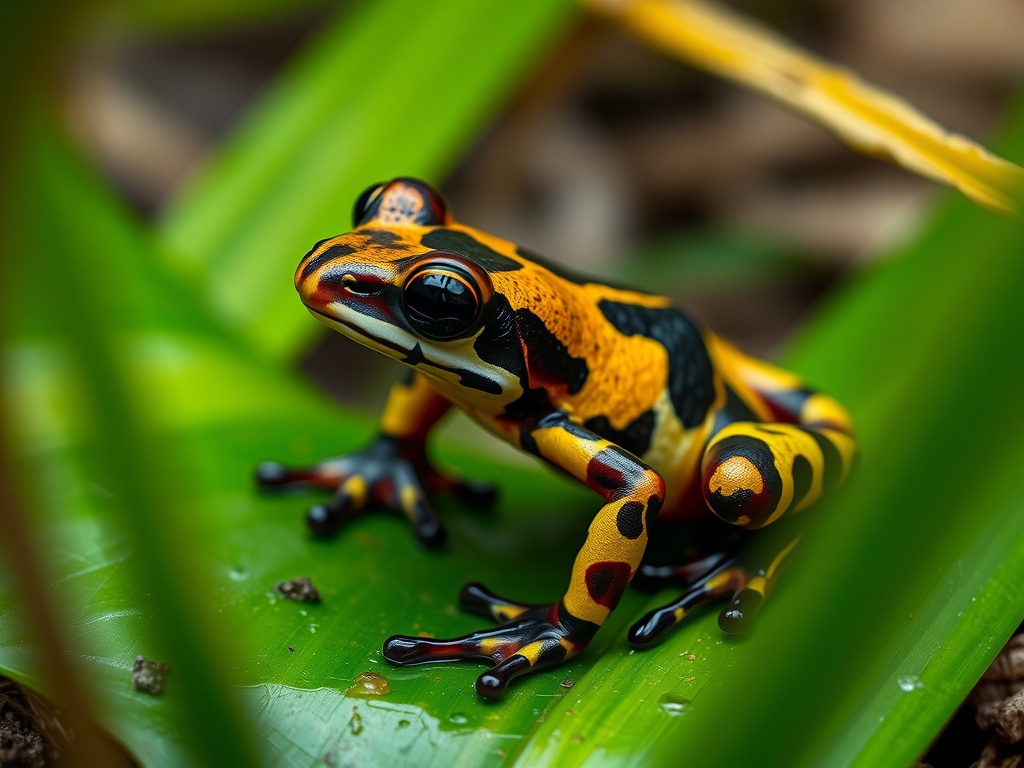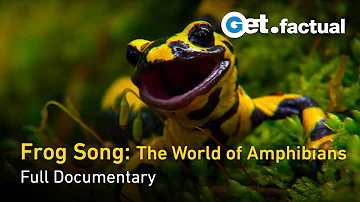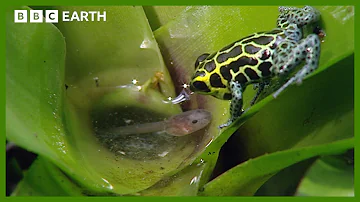
Ecuadorian Poison Frog
Ameerega bilinguis

Meet the Ecuadorian Poison Frog
The Ecuadorian Poison Frog is a small, brightly colored amphibian native to the humid lowland and foothill forests of Ecuador and northern Peru. It is known for its striking black body adorned with vibrant blue or green markings, which serve as a warning to potential predators about its toxicity. This diurnal frog is often found near streams and in leaf litter, where it hunts for small invertebrates. The species is notable for its parental care, with males transporting tadpoles to water after hatching.
Classification
Amphibian
Habitat
Tropical rainforest
Diet
Carnivore
Lifespan
4-8 years
Conservation
Near Threatened
Weight
2-4 grams
📖Fascinating Facts
Toxin Source
Their powerful skin toxins come from consuming certain ants and mites, making them dangerous to some predators.
Parental Care
Male Ecuadorian Poison Frogs guard eggs and transport tadpoles on their backs to suitable water bodies.
Bright Warnings
Their bold blue or green markings serve as a warning signal, deterring predators by advertising their toxicity.
📋Detailed Description
The Ecuadorian Poison Frog (Ameerega bilinguis) is a small dendrobatid amphibian, typically measuring between 22–29 mm in snout-vent length, with females generally larger than males. Its slender body is characterized by a jet-black dorsal surface, accentuated by striking lateral stripes of iridescent blue or green, which extend from the snout along the flanks and limbs. The ventral side is often lighter, with blue or turquoise mottling. This aposematic coloration serves as a visual deterrent to predators, signaling the presence of skin alkaloid toxins, though Ameerega species are less toxic than some other dendrobatids. The species is diurnal, with peak activity during the early morning and late afternoon, and is most commonly encountered in the leaf litter or on low vegetation near slow-moving streams in primary and secondary lowland rainforests, at elevations from 100 to 900 meters. Ameerega bilinguis exhibits strong site fidelity and territoriality, with males defending calling sites through vocalizations and occasional physical displays. The species is primarily insectivorous, preying on ants, termites, mites, and small arthropods, which contribute to its chemical defense. Reproduction involves complex courtship, with males emitting a series of high-pitched trills to attract females. After external fertilization, the male guards the eggs and later transports the hatched tadpoles on his back to suitable aquatic microhabitats. This parental care is crucial for offspring survival in the dynamic rainforest environment. Ameerega bilinguis is an indicator species for ecosystem health, sensitive to habitat disturbance and water quality changes.
💡 Did you know?
Despite their toxic skin in the wild, Ecuadorian Poison Frogs lose their toxicity when raised in captivity due to changes in diet.
🔬Research & Sources
🎭Behavior & Social Structure
Ameerega bilinguis is a solitary and territorial species, with males establishing and defending small territories (typically 2–4 m²) near water sources. Territorial disputes are resolved through vocalizations, posturing, and, rarely, physical combat. Males produce a distinctive, rapid series of trills or chirps, which serve both to attract females and to ward off rival males. Foraging occurs primarily on the forest floor, where the frogs actively search for small invertebrates among leaf litter and moss. Feeding is opportunistic, with a preference for ants and mites, which are important for toxin sequestration. The species is mostly active during daylight hours, particularly in the early morning and late afternoon, and seeks shelter under logs, rocks, or dense vegetation during the hottest part of the day or in adverse weather. Social interactions outside of breeding are minimal, and individuals maintain defined spatial boundaries.
👶Reproduction & Life Cycle
Breeding in Ameerega bilinguis is closely tied to the rainy season, typically from December to May, when humidity and water availability are optimal. Males call from concealed sites near streams or temporary pools to attract females. Courtship involves a series of tactile and vocal interactions, with the female following the male to a suitable oviposition site, usually a moist crevice or leaf. Clutch size ranges from 10 to 20 eggs, which are laid on land and fertilized externally. The male remains with the eggs, guarding them from desiccation and predation. After 10–14 days, upon hatching, the male transports the tadpoles on his back to shallow, slow-moving water, often in small pools or stream margins. Larval development lasts 6–8 weeks, after which metamorphosis occurs. Juveniles are independent upon emergence from the water and disperse into the surrounding leaf litter.
🛡️Adaptations & Survival
Ameerega bilinguis exhibits several adaptations for survival in its humid rainforest habitat. Its bright aposematic coloration warns predators of its skin toxins, which are derived from dietary alkaloids, primarily from ants and mites. The frog's smooth, permeable skin allows for efficient cutaneous respiration and moisture absorption, essential in the often-saturated microhabitats it occupies. Strong, adhesive toe pads facilitate climbing on wet vegetation and rocks near streams. Behavioral adaptations include diurnal activity patterns to avoid nocturnal predators and the use of specific microhabitats for egg and tadpole deposition, reducing predation risk. Parental care, particularly male tadpole transport, is a key evolutionary strategy that enhances offspring survival in unpredictable aquatic environments.
📚Research Sources
🎨Cultural Significance
Unlike some other poison frogs, Ameerega bilinguis does not have a strong presence in indigenous folklore or traditional medicine, likely due to its relatively mild toxicity. However, its striking appearance and role as an indicator species have made it a subject of interest in ecotourism and environmental education in Ecuador and Peru. The species is sometimes featured in conservation campaigns highlighting the importance of rainforest preservation and amphibian diversity.
🔬Recent Research & Discoveries
Recent research on Ameerega bilinguis has focused on its chemical ecology, particularly the diversity and ecological origins of its skin alkaloids. Studies have shown that the frog's toxicity is diet-dependent and varies geographically, reflecting local ant and mite communities. Genetic analyses have clarified its phylogenetic relationships within the genus Ameerega, supporting its distinction from closely related species. Ongoing field studies are investigating the impacts of habitat fragmentation and water pollution on population dynamics and reproductive success. Additionally, the species is being monitored as part of broader amphibian conservation programs in the Andes-Amazon transition zone.
🎥Wildlife Videos

Frog Song: The World of Amphibians - Full Documentary
Amphibians are living fossils in a modern world. The various species of frogs, toads, and salamanders are more diverse than you ...
Get.factual

The Fascinating Life of Ecuador's Poison Dart Frogs
The Fascinating Life of Ecuador's Poison Dart Frogs Journey into the heart of Ecuador's lush rainforests to uncover the captivating ...
CuteAnimal_JC

Ecuador On the Wild Side | From the Amazon to the Andean Peaks | Animal documentary
This episode reveals the best-preserved biotopes, from -5m to 5000m altitude, running from East to West. The habitat stretches ...
WildNature HDTv

Incredible Poison Arrow Frog Raises Tadpoles in the Treetops | BBC Earth
Raising tadpoles in the wild is no easy task. This tiny poison arrow frog has carried his young to the safe treetop pools. But when ...
BBC Earth

The Secrets Of The Frog | Our World
Most people perceive frogs as cold, wet, slimy, ugly creatures that give us warts on the slightest contact. The closer we look at ...
Our World

Searching for the world’s lost frogs
One thing you need to know about frogs: they're going through a major extinction event. Some frog species haven't been seen in ...
Planet Wild
🌍Habitat Information
The Ecuadorian Poison Frog typically inhabits Tropical rainforest environments. Ecuadorian Poison Frogs have adapted to their environments with specialized features and behaviors.
Primary Habitat:
Tropical rainforest
More detailed habitat information will be available soon.
🛡️Conservation Status
The Ecuadorian Poison Frog is currently classified as Near Threatened. Conservation efforts are crucial for preserving this species for future generations.
Common Threats:
- 🏠Habitat loss and fragmentation
- 🌡️Climate change impacts
- 🎯Hunting and poaching
- 🏭Human-wildlife conflict
⚠️Threats & Conservation Challenges
The primary threats to Ameerega bilinguis are habitat loss and fragmentation due to agricultural expansion, logging, and human settlement. Water pollution from pesticides and other agrochemicals poses additional risks, as the species relies on clean, slow-moving streams for reproduction. Climate change, resulting in altered rainfall patterns and increased frequency of droughts, may further impact breeding success and larval development. The species is also susceptible to chytridiomycosis, a fungal disease affecting amphibians globally. While not currently targeted by the pet trade to the extent of some other dendrobatids, illegal collection remains a potential concern. Population trends indicate localized declines, particularly in areas of intense habitat disturbance, leading to its Near Threatened status on the IUCN Red List.
🔬Scientific Classification
Scientific Name
Ameerega bilinguis
Classification Hierarchy
🔍 About Taxonomic Classification
Taxonomic classification is a hierarchical system used by scientists to classify and organize living organisms based on shared characteristics and evolutionary relationships.
The system moves from broad categories (Kingdom) to increasingly specific ones, with each animal's scientific name typically consisting of its Genus and species.
📝Community Notes
Share your observations and insights about the Ecuadorian Poison Frog with our community of wildlife enthusiasts.
Join Our Community
Sign in to share your observations and connect with fellow wildlife enthusiasts.
Sign In to ContributeNo community notes yet
Be the first to share your observations about the Ecuadorian Poison Frog!
Explore Ecuadorian Poison Frog
Select a tab above to learn more about this amazing animal.
📸Photo Gallery
No photos available for this animal yet.
🌟Discover More Wildlife
Continue your journey of discovery with more fascinating animals from our database
